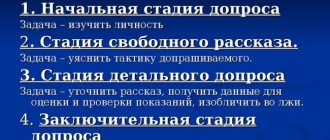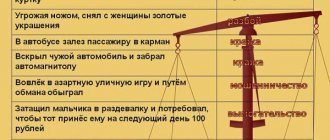Pornography examination is one of the types of cultural or sociocultural examination. This classification is based on the fact that the subject of analysis (pornography) refers to cultural objects, and the influence of pornography on society and society’s attitude towards this phenomenon lies in the sociological sphere. The main reason for imposing a ban on the production and distribution of pornographic materials is to protect children and adolescents from the undesirable influence of pornography on their psychological health, social adaptation and upbringing.
Attitudes towards pornography in different countries are ambiguous. In a number of countries (Brazil, New Zealand, Spain) pornography is permitted; only the sale of pornographic materials to persons under 18 years of age is prohibited. Brazil even strictly stipulates the use of condoms by male actors. In Mexico, pornography is legal, but sales and display to persons under 18 are prohibited. In some countries (Israel, Sri Lanka) pornography is prohibited. The harshest attitude towards pornography is in China, where the death penalty (execution) is provided for the distribution of pornography. The governments of Holland, Germany and Austria are most lenient towards pornography. In the UK, the showing of pornographic and explicit erotic scenes is prohibited, even on pay cable channels. However, Britons have access to satellite television and can also subscribe to magazines from other European countries. As for Russia, in our country there are no laws regulating the methods of legitimate distribution of pornographic materials. Accordingly, any production, advertising and sale of pornography is illegal. Any distribution of pornography among children is punishable.
The line between pornography and works of erotic art is quite thin and shaky. The main accusation against pornography is the particular cynicism of the depiction of the genitals and the process of copulation. Cynicism refers to a special disregard for the norms of public morality (cultural values, considerations of decency), expressed in a defiantly dismissive form. Signs of pornography also include a detailed and self-explanatory image (description) of the genitals.
The examination of pornography acquired significant weight after the Federal Law of December 29, 2010 No. 463-FZ “On the protection of children from information harmful to their health and development” came into force on September 1, 2012. Legislation defines signs according to which pornographic materials can be identified. These include:
- Deliberately naturalistic images or descriptions of genitals and/or sexual intercourse.
- Explicit sexual nature of the actions depicted in the material.
- Sexual acts performed on an animal.
What criteria does the expert follow when conducting an examination of pornography?
Modern cultural scientists identify a number of characteristics according to which pornographic materials differ from other sexually oriented materials (erotic works):
- Analytics of pornographic materials, specialized study of the genital area and the process of sexual intercourse.
- Constantly attracting the attention of the viewer (reader) to the genitals, manipulations with them, to the sexual act itself.
- The depiction of a purely physiological component of sexuality, which leaves other aspects of human sexual relationships outside the scope of attention.
- Absence of a personal component of sexual behavior.
- Focus on provoking physiological sexual arousal, which is facilitated by the unambiguity of the image and the unambiguous interpretation by the consumer.
- The use of standard stereotypical stimuli that lie outside the range of socially approved forms of sexual behavior, for example, scenes of group sex, scenes of sexual intercourse with animals, scenes of sadism, homosexual relationships, and so on. Violation of basic taboo prohibitions is one of the most powerful stimuli for arousal.
- Display of socially unacceptable, morally condemned, dehumanized forms of sexual intercourse.
- Montage of scenes of a purely sexual nature with cynically shown gross details, produced for the sake of the actual display of sexual intercourse, not intended to follow any artistic goal.
- Replacement of heroes with physiological gender symbols.
- The predominance of close-ups, capturing mainly the genitals, direct shooting angles when showing sexual acts.
- The material does not have a plot, or there is a pseudo-plot used only for a formal artificial connection of scenes demonstrating the physiological side of sexual relations.
Story
Pornographic representations of sexual intercourse and genitals, contrary to popular belief, are not a modern invention.
On the frescoes of ancient Rome and antique vases you can see similar motifs. Similar images are found on ceramics in Peru. From the Renaissance until the 18th century, “pornographic” engravings became widespread. With the advent of photography in the 19th century and cinematography in the 20th, the pornographic representation of sexuality received a new round of development.
The term owes its origin to the appearance in the 18th century in France of Retief de la Bretonne’s book “The Pornographer, or Reflections of a Decent Man on the True Immorality of Prostitution.” This book examined areas of human activity that were traditionally considered indecent in society, which is why its title became a common noun for obscenity associated with sexuality.
What is the effect of pornography on the human psyche?
The impact of pornography on the psyche of an adult is largely determined by his personality, type of temperament, personal event and psychological history. In any case, an adult is capable of working on his psychological state. The influence of pornography on a child’s psyche is corrupting. What does it mean? When forming a picture of the world, the maturing personality of a child or teenager relies on the images that surround it. Of great importance in the process of growing up are the phenomena of the physical and spiritual world that come into the field of vision of a growing person. Pornography, being an emasculated, cynical and strictly physiological product, can form in the psyche of a child or teenager a flawed idea of the sexual side of human relationships: emotional relationships with people are replaced by technical connections with artificially idealized sexual objects. A person’s personality can be formed according to a neurotic principle. However, the impact of pornography on the mental world of an adult can also be painful. Here are the main negative ways in which pornography influences a person’s consciousness:
- The exaggerated passion of sex scenes in pornographic films reduces the attractiveness of your own partner.
- A physiologically imperfect partner begins to seem less attractive.
- Tolerance to casual sexual relations, as well as deviant (deviant) forms of sexual behavior, increases significantly.
- The partner is perceived solely as a machine for sexual satisfaction; other facets are lost in the relationship: emotional, spiritual, social, and so on.
- Aggression increases both towards the sexual partner and towards representatives of the other sex in general.
- The frequent portrayal of sexual aggression as an act pleasurable for the victim leads to the use of violence in the real sexual life of the consumer.
Who conducts the examination of pornography?
A lawyer can define pornography as written in the law, but does not have the right to establish the presence of pornography in a controversial subject. To determine whether an object is pornographic or contains elements of pornography, an expert with the necessary knowledge in the field of social and cultural sciences is invited. The examination of pornography can be carried out by one art expert or by commission. In difficult cases, during a repeated examination, as well as if it is necessary to attract the knowledge of specialists from other fields, a commission is convened to determine the pornographic nature of the content of the controversial material. The pornography examination commission may include the following specialists:
- art critics;
- psychologists;
- specialists in their field of medicine (sexopathologists, psychiatrists, etc.);
- specialists from the field of pedagogy;
- sociologists;
- artists;
- specialists in the field of cinematography, video and television.
The conclusion of the expert commission serves as evidence in court. Moreover, the court may not take into account the expert opinion on the examination of pornography if it considers the composition of the commission incomplete. For example, when examining film products, the expert commission should include a specialist from the relevant field. The conclusion of one sex therapist will not be enough to be taken into account in court.
Pornography in museums
Naked bodies have been present in art since the times of the Ancient World: they are woven from fabric, carved from bone, and the subjects of many paintings are devoted to them. Now these works are presented in most museums. That is why the topic of criminal liability for so-called pornography is so hotly discussed in the art community: as the number of cases of pornography increases, museums are also under threat.
“And the Hermitage, and the Russian Museum, and the Tretyakov Gallery, and the Pushkin Museum, and the Academy of Arts - they all unanimously say that the cases of pornography are some kind of attack of the absurd. If you look at the history of art, where there are millions of naked people, millions of naked children, millions of genitals, if we consider what is stored in museums [as pornography], then all the curators of museums and libraries, without exception, will go to prison,” says Nikolai Ivanov.
all curators of museums and libraries will sit down without exception
According to the expert, in cases of pornography, the prosecution appeals to spiritual bonds, normativity, religiosity, the value of the state and collectivization. From this point of view, differences between people are ignored and even annoying. Therefore, feminists, LGBT people, and activists who go against state corporations suffer.
Egon Schiele. Nude
This pressure is also on culture and freedom of speech, adds Ivanov. After all, opinion is expressed not only in words, but also visually: through images, films. And this freedom of expression is spelled out in the Constitution, which the defense can appeal to when considering cases of pornography.
In the current conditions, the task of art critics is to provide expertise and together fight for freedom of creativity, Ivanov believes. “It wasn’t my dream in life to become a pornography specialist,” says the expert. “I didn’t even have this in my mind when I received my candidate’s degree in art history.” But when things started to happen with artists and ordinary people posting images somewhere online, in books, or making videos with what could be called pornography, I realized that I needed to somehow retrain.”
If previously in Nikolai Ivanov’s practice there was one case every two years, now he is sent so-called pornographic images almost every two weeks. In particular, he also worked on the examination of the film “Dau” for the trial between director Ilya Khrzhanovsky and the Ministry of Culture.
Another case from the expert’s practice is related to the film “Instinctive Criticism of Fascism,” in which poetess Katya Ganeshi starred. Together with her ex-husband, more than 17 years ago, she recorded a video in which there was sexual intercourse without showing details. The plot was interspersed with footage of the development of the Third Reich. The poetess was accused not only of creating a pornographic video, but also of promoting fascism.
The artistic idea, as the expert established, was that “Nazism, as the apotheosis of world evil, can only be defeated by attacking it entirely. With your mind, with all your instincts, naturally, from the inside.” For this reason, a parallel was drawn with sexual intercourse. Because of videos and nude photographs published on social networks, Katya Ganesh was fired from her job. The court refused to declare the dismissal illegal.
Nikolai Ivanov also worked on the case of Bryansk transgender woman Michelle, who was sentenced to three years in prison for publishing erotic images on VKontakte. We were talking about three manga-style pictures that were posted on the page back in 2014. A criminal case was opened only five years later.
Read also
In Bryansk, a transgender woman, Michelle, is working without a salary due to the coronavirus. She is the only epidemiologist in the hospital
“Some of them don’t have a mouth, a nose, or an eye halfway across their face. Someone has fantastic wings, like a bat, horns, and genitals, exaggerated perhaps ten times. This is a common move for Japanese animation, there is nothing criminal here. But the investigator saw in these images children under fourteen years old. And, accordingly, Michelle was accused of distributing pornography involving children under fourteen,” says Ivanov.
The expert came to the conclusion that the pictures in question contain a high degree of conventionality. Since the characters are fictional, their age can be anything: 14 years old or 830. In addition, “hentai” is a well-known genre of Japanese animation, it is widely represented on the Internet and is in the public domain. After the sentence was reviewed, Michelle was given two years of correctional labor (minus five months due to being in a pre-trial detention center) and a fine of 50 thousand rubles.
Methods for conducting examination of pornography
To determine the presence of pornographic content in controversial material, experts use the methods of their field of knowledge or science. Here is a short list of the main methods of examining pornography:
- Visual.
- Cultural. They are used to establish the artistic value of a controversial object, the attributes of a work of authorship, etc.
- Psychological. Using psychological methods, it is possible to identify the impact of a controversial object on the consciousness (subconscious) of the consumer. Psychology has accumulated many methods that are effective in research of this kind: for example, surveys of control groups.
- Experimental. Designed to study the perception of controversial materials in specially created conditions.
What legal framework governs the examination of pornography?
There are several areas regulating the examination of pornography.
In the Russian Federation, criminal article 242 (“Illegal distribution of pornographic materials and objects”) of the Criminal Code is established for the distribution, production, trade in film and video products, printed publications and objects containing pornography. The minimum punishment provided for in the article is a fine in the amount of 500 to 800 times the minimum wage. The maximum penalty provided for in the article is 2 years of imprisonment. Distribution of pornographic materials involving persons under eighteen years of age is punishable by imprisonment for up to six years. Distribution of pornographic materials involving persons under fourteen years of age is punishable by imprisonment for up to eight years.
Article 135 (“Depraved acts”) of the Criminal Code of the Russian Federation is often qualifying together with Article 242 of the Criminal Code.
Article 18 of the Federal Law of December 29, 2010 No. 463-FZ “On the protection of children from information harmful to their health and development” regulates the preparation of an expert opinion on issues of accessibility for children of the content of information in the object under study.
Article 41 of the Federal Law of May 31, 2001 No. 73-FZ “On State Forensic Activities in the Russian Federation” states that forensic examination can be carried out not only in state organizations of a forensic nature, but also by other persons with special knowledge in the relevant area.
Everything about criminal cases
- below is a fragment of the cassation appeal - compiled on the basis of judicial practice.- if the arguments used in it are inconsistent with the circumstances of your case, you can use it when drawing up your complaint.
Url Additional information:
Contradictions in the court's findings
, logical errors (glaring violation)
- pay attention (when studying the sentence) to the following circumstance: in sentences under Article 242.1 of the Criminal Code
courts may allow confusion in the text of the sentence between
direct
and
indirect intent
; this logical error can be used when appealing.
Url Additional information:
How to write a cassation appeal
, recommendations (specifically for cassation)
— we also recommend studying the materials on drawing up a cassation appeal (see here
).
Cassation appeal, recommendations (based on practice)
Lack of direct intent
- the evidence specified in the verdict relates only to the objective side of the crime, without proving the subjective side (direct intent):
- corpus delicti 242.1 of the Criminal Code
presupposes only
direct intent
aimed at “storing, distributing ...”.
The list of evidence specified in the verdict is included in the evidentiary base
.
- protocols of interrogations of witnesses (4 people), from which it follows that the convicted person is the owner of the computer (from the system unit of which a hard drive with pornographic materials was seized),
- the conclusion of an art expert examination, from which it follows that the materials on the hard drive seized from the convicted person are pornographic materials,
- other evidence from which the court concludes that:
A)
the fact that the IP address or system unit belongs to the convicted person.
b)
the fact that the actions of downloading materials from the Internet were carried out by the convicted person, and not by any other third party.
V)
the relevance of the materials specifically to pornographic materials in the legal sense specified in
Note 1 to 242.1 of the Criminal Code
.
- citing evidence on which the court’s conclusions about the guilt of his client are based ( Part 2 307 of the Code of Criminal Procedure
) the court of first instance actually 100% cites circumstances that coincide with the position of the convicted person. That is, the convicted person fully acknowledges all of the above factual circumstances.
- however, the convict categorically denies the presence of intent aimed at “storing, distributing ...” these materials.
- none of the evidence given in the reasons for the verdict
does not contain evidence of intent.
Contradictions in the court's findings
— according to the wording used by the court when motivating the conclusion that the guilt of the convicted person has been proven, the court indicates that “being an experienced user…. could not help but realize that he was distributing... “(note: that is, from this phrase, exemplary by the court in the verdict, it follows that the court considers the intent of the convicted person to be indirect
).
At the same time (in another place in the text of the sentence), the court makes a conclusion in the sentence that the convicted person has direct intent
to commit the act charged with him.
- the use of two contradictory conclusions in the court verdict indicates the presence of significant contradictions in the verdict, which is unacceptable, according to the norms of Part 4 389.16 of the Code of Criminal Procedure
.
What questions does a specialist answer during a pornography examination?
- Does the material in question contain pornographic content?
- Can the controversial material be considered pornographic?
- Is a depiction of genital organs a work of art?
- Can this object be called a work of erotic art?
- Does the disputed object contain any characteristics of a pornographic work?
- Does the film “...” have artistic value?
- Is there a fictional plot in the work (film)?
- Is the plot of the film artificial, pursuing a strictly physiological goal?
- Does the work fulfill some artistic purpose?
IMPORTANT The list of suggested questions is not exhaustive. If other questions arise, it is advisable to seek advice from an expert before scheduling an examination.










